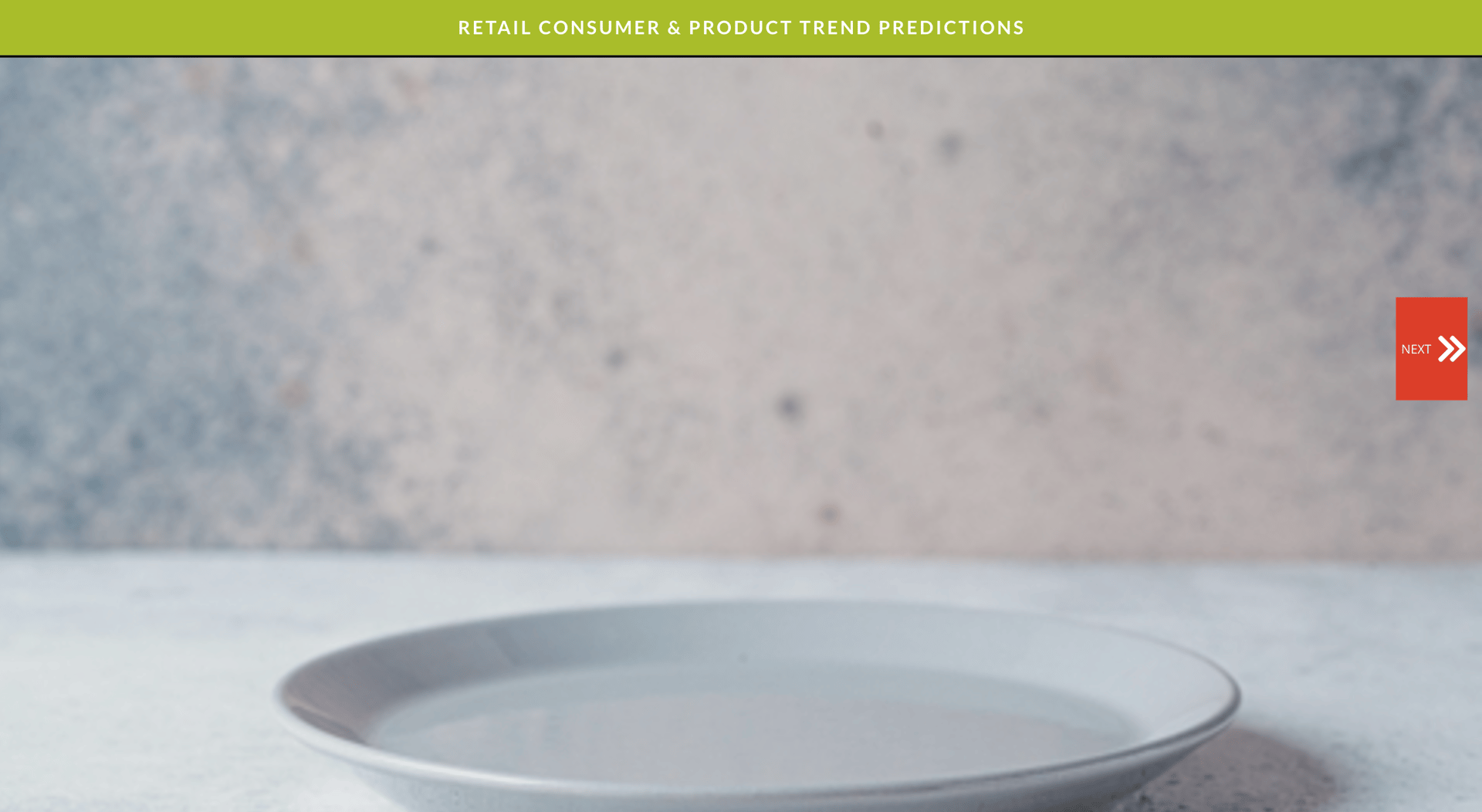WHAT’S NEXT IN 2025?
IMMUNITY
Cultured dairy, flavonoid-rich fruits, whole grains packed with prebiotic fibers and minerals join other immune health-powering ingredients strongly trending. gif courtesy of: iStock/alvarez
Since the Covid pandemic of 2020-2023, health foods have been gaining popularity and have been dominating markets increasingly year after year. Surprisingly, 2024—considered the first “post-Pandemic” year—was no different.
The primary immune-supporting ingredient category is that of probiotics, those beneficial microbial organisms that confer some form of health benefit either directly or indirectly when ingested. With probiotics carrying the immune health banner, it’s no surprise that throughout 2024 interest in probiotics and health by both consumers and product makers rose beyond even those levels seen in 2023.
With increasing demand for variety, functionality, taste, and—most importantly—cost-effectiveness, developers of immunity supporting foods and beverages, especially those containing probiotics, have focused on flavorful, quick products. In addition, such items also have been designed to satisfy that other huge consumer demand, that of minimally processed, fresh, sustainable foods.
By Erin Costello
As we enter 2025, it is important to look ahead at what immune health trends will dominate the market.
Eye on Immunity 2025
Dana McCurdy, PhD, Contributing Technical Editor
Millennials and Gen Zs continue to emphasize their interest in immune health, specifically gut health and mental health via consumption of functional ingredients.

Botanicals for immunity are rapidly gaining ground among consumers as hard science supports traditional herbal medicines. Photo courtesy of: iStock/zagardinova
Prebiotics
Prebiotics have been gaining traction in the market throughout 2024 and will continue to gain popularity as more food and beverage products containing prebiotic fibers hit the retail shelves. This is driven by growing consumer awareness of the functional properties and corresponding health benefits that prebiotic fibers provide. Concurrently, new research on prebiotic fibers is being released, establishing the important connection between prebiotic fibers, gut health, and immunity. Regarding specific ingredients, research has boosted demand for beta-glucans, fructo-oligosaccharides, galacto-oligosaccharides, inulin, and other prebiotic fibers in food and beverages.
The benefits of prebiotic fibers extend beyond feeding probiotic microbes. They also help mitigate the impacts of non-communicable diseases such as diabetes and high-cholesterol. With health in mind, and as many Millennials are beginning to experience symptoms of these diseases earlier than previous generations, prebiotic fibers are taking a more prominent role in the diet across a wider demographic.
Fibers such as resistant starches, lactulose, maltodextrin, and guar gum provide benefits to the immune system by stimulating T cells, natural killer cells, and B cells. Additionally, the metabolites produced from fermentation of prebiotic fibers also influence the immune system, stimulating improved gut barrier integrity, reducing inflammation, and eliciting allergy-positive impacts on dietary allergens. They also reduce pathogenic bacterial populations by supporting probiotic growth and metabolite production.
The role prebiotic fibers have in supporting probiotic establishment and longevity in the gut has been gaining greater attention from consumers and their families in recent years. With increasing knowledge and awareness, demand for products containing both prebiotics and probiotics has increased and will continue to climb in 2025 as more research is published on functional components of prebiotic fibers.
Working Pros
Not all probiotics are actually effective. The key is to select probiotic strains that have been studied in clinical trials with proven colony forming unit (cfu) counts that can influence the beneficial bacteria in the g.i. tract. This also includes vetting probiotic solutions that contain multiple strains of bacteria and/or yeast to bolster the gut and provide a variety of microorganisms proven to help restructure the gut microbiome. Equally important is ensuring that the medium for delivery contains dietary fats sufficient to protect the probiotics through the initial digestive processes. Incorporating probiotics into products such as fat-free or even low-fat dairy can sharply diminish the establishment of colonies in the gut where they do their best work.

Product makers are finding high consumer appeal through combining several immune health-supporting ingredients synchronized into a single flavorful and convenient format. Photo courtesy of: Stock/marilyna
Synbiotics
Public awareness of synbiotics is emerging, and these ingredients already are taking the spotlight as we head into 2025. Gut dysbiosis is a growing problem affecting not only digestion but also sleep, weight, energy, emotional health, cognition, and immunity. The concept of having a “complete” supplement aimed at improving and sustaining positive gut health and immunity is attractive to busy consumers seeking to support their health while on the go.
By rebalancing the digestive tract with a supportive cocktail of probiotics and their complementary prebiotic fibers, gut dysbiosis can be alleviated with consistent supplementation in foods and beverages. The concept of pairing a specific probiotic with a prebiotic is showing promising results in clinical studies. As awareness grows, the demand for these fine-tuned dietary support systems will take off in 2025.
The more such products gain traction with consumers and their families, the more scrutiny will be given to the form in which synbiotics are delivered. Consumers expect claims on probiotics to be accurate and they expect to receive the full benefits of a synbiotic product. This necessitates the use of protective barriers to help probiotics bypass the stomach, and better packaging for convenience to reduce the need for refrigeration while providing the full benefits of a freshly fermented product.
Postbiotics
Another concept gaining the attention of consumers, and therefore industry, is that of postbiotics. Postbiotics are those products of fermentation that can aid in improving immunity, cognition, and gut health, and help alleviate chronic inflammation, among other purported benefits. Postbiotics could prove to be key players in the food and beverage space in the coming years.
Postbiotics such as short-chain fatty acids (acetate, propionate, and butyrate) support the intestinal barrier and suppress pathogens and undesirable bacterial growth while also regulating digestion. Postbiotics also include remnants of dead microorganisms, cell wall fragments, bacterial lysates, exo-polysaccharides, vitamins, enzymes, and other metabolites produced by probiotic organisms.
Many postbiotic compounds improve metabolic function, help decrease the risk of certain cancers, contribute to improved cognition, mood, and aging, and, of course, improve immune function. All of these postbiotic compounds can be acquired through either a fermented food or beverage. Additionally, they can be isolated and added to a food or beverage product to improve the functional properties of a non-fermented food or beverage.

Losses of probiotic cfu counts in the acidic environment of the stomach can be mitigated by the healthful fats in whole-milk dairy. Photo courtesy of: The Icelandic Milk Skyr Corp.
Mental Immune Support
Mental health has been an increasingly important factor for Millennials and Gen Zers, as well as seniors and near-seniors in both the home and workplace. With this central focus, better-for-you product developers are increasingly zeroing in on the gut-brain axis as a pathway to improve mood, cognitive function, and stress relief. The gut-brain axis is a deep-rooted connection between the digestive system and the brain. What goes into the body greatly affects the gut microbiome, which in turn influences the mental state. Shifts and changes take time to occur, but good gut health has been linked to improved brain and memory function, stress relief, and overall mood stability. Just as the digestive system can be in a state of dysbiosis, the brain, too, can be in a similar state as a result of imbalances in the digestive system.
With demand increasing for precision in functionality, not only do the prebiotics and probiotics have to be better and more widely available, but the products containing them must also demonstrate postbiotic effects. The new awareness of both synbiotics and post-biotics has opened the door for product developers to create more comprehensive immune-supporting foods and beverages.
The value to health and immunity of prebiotics, probiotics, synbiotics, and postbiotics is manifold. These compounds exist naturally and encourage the natural rhythm of our digestive system. Moreover, they encourage balance and harmony within the rest of the body due to the connection the gut has to cognitive function—the so-called gut-brain axis. Consumers are demanding foods and beverages that promote health, cognitive function, and immune support.
To this end, the trends of synbiotics with added postbiotic compounds will gain speed in 2025, with special attention to products that alleviate not only gut dysbiosis, but also stress, mood imbalances and anxiety. Ingredients such as omega-3 fatty acids, beta-glucans, ashwagandha, and gingko are all important, natural ingredients that bolster gut and brain health.

Wellness ingredient technology took a recent leap forward with probiotic microorganisms that convert sugars into prebiotic fibers. Photo courtesy of: ZBiotics Co.
As Millennials are entering their mid-life era, healthy aging has also been a driver for probiotic products aimed at gut health as it relates to cognitive performance and emotional well-being. These consumers know the importance of the gut-brain axis and its role in healthy living and aging, and they demand high quality and consistency in probiotic products. In addition to those considerations, developers must keep in mind that flavor, convenience, and price are still important, even in the prebiotic, probiotic, and postbiotic health food space.
The year 2024 has been yet another step forward in the consumer drive for healthier foods and beverages. The past year saw an increase in the demand for transparency, sustainability, and improved nutrient content of foods. Consumers are insisting on better products, better flavors, better health, and better prices. These trends will continue into 2025 and become more specific as the year progresses. Americans are no longer neglecting their health, and digestive and cognitive health have become a top priority, one that is centered on immunity through better nutrition.
Immunity and Aging
VIEW HERE
Among the more urgent immunity trends is that of ingredients boosting immunity in the “over-50” population. Check out this short video on immunity in aging with Dr. Dana McCurdy and then click here to read her article, “Immunity Formulations for Seniors.”
Dana McCurdy, PhD, is an analytical chemist, nutrition biochemist, and fermentation scientist with industry experience. Her expertise is in fermented dairy, nutrition-mediated immunity, and the application of live bioactive cultures in food and beverage formulation with a focus on fermentation process development and product innovation and development. She can be reached at danamccurdy@hotmail.com.


